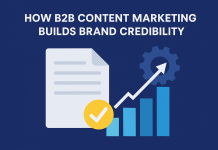In B2B relationships, a client’s first experience with your company sets the tone for everything that follows. That’s why an efficient and scalable B2B customer onboarding process is more than just a formality—it’s a strategic investment in long-term client success, retention, and growth.
Why B2B Customer Onboarding Is Crucial
Unlike B2C onboarding, B2B onboarding is more complex. It often involves multiple decision-makers, custom solutions, and longer setup periods. A poor onboarding experience can lead to frustration, delays in value realization, and ultimately, churn. On the other hand, a smooth and personalized onboarding journey builds trust, shortens the time-to-value (TTV), and increases lifetime value (LTV).
Key Components of a Scalable Onboarding Process
Let’s break down how you can build a B2B onboarding process that grows with your business while staying client-centric:
1. Standardize Your Process with Flexibility
Create a well-documented onboarding workflow that can be adapted to different client needs. Develop checklists, templates, and guides that ensure consistency across accounts. While standardization is important for scalability, flexibility is key to tailoring experiences for enterprise clients with unique requirements.
2. Assign a Dedicated Onboarding Manager
A designated onboarding manager or customer success specialist can act as the client’s go-to person, guiding them through every stage of the process. This personal touch builds accountability and rapport, ensuring clients feel supported from day one.
3. Set Clear Expectations and Milestones
From kickoff to go-live, outline each phase of the onboarding journey. Set measurable goals and success metrics at every stage, such as system integrations completed, training sessions delivered, or first campaign launched. This helps keep both your team and the client aligned.
4. Leverage Automation and Technology
Use CRM tools, email automation, and customer success platforms to streamline repetitive tasks like scheduling meetings, sending documents, or providing tutorials. This not only saves time but also creates a more consistent experience across accounts.
5. Offer Self-Service Resources
Clients appreciate having access to on-demand resources. Develop a knowledge base, onboarding videos, and FAQs that clients can refer to at their convenience. This reduces dependency on support teams and empowers clients to explore your product or service at their own pace.
6. Gather Feedback and Continuously Improve
Regularly collect feedback during and after the onboarding process to identify gaps or pain points. Conduct surveys, hold review calls, and analyze completion rates. Use these insights to refine and enhance your onboarding approach over time.
Benefits of a Scalable B2B Onboarding Process
- Improved Customer Satisfaction: Clients feel valued and understood from the start.
- Reduced Churn: A positive onboarding experience lowers the risk of early drop-off.
- Faster Time-to-Value: Clients start seeing ROI sooner, leading to quicker renewals or upsells.
- Operational Efficiency: Your internal teams can handle more clients without being overwhelmed.
Final Thoughts
A scalable B2B customer onboarding process is more than a series of tasks—it’s the foundation for a successful, long-term client relationship. By combining structure with personalization and automation with human touch, you can ensure that every new client is set up for success, no matter how quickly your business grows.









